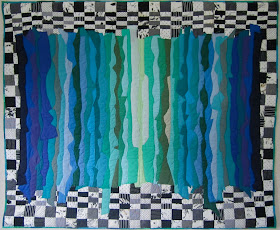When I first came to Tunisia many years ago, not all households had bathrooms. Yes, they had indoor plumbing, with toilets and sinks, but not an official bathing space with a bathtub. The reason was simple: people went to the hammam (public baths), men in the morning, women in the afternoon. Today, private homes have bathrooms, however, the hammam remains popular. In home décor magazines, I’ve even seen bathrooms in extravagant homes designed like a mini-hammam with lots of marble, built in benches and large sunken tubs—very lovely.
I went only once to the hammam. I found it a bit too public for my personal taste, however, I like the idea and if I had been raised in Tunisia I would have probably gone regularly. You see, the hammam is not just about getting clean. It’s a place where people meet, and there is a leveling factor, it’s rather democratic: everyone is in some state of undress. You can’t show off or hide behind your clothing. Plus, it’s a total experience that takes at least a couple of hours: there are several stages in several rooms: the steamy sauna, the cool water area and, of course, there is the masseuse (masseur for men). You stretch out on a cement slab and she works you over with a rough wash cloth. She charges about a dollar and a half for a full body scrub, about five dollars for a full body sugar waxing, which is traditional for married women. After further washing and rinsing, you come out with a new skin, sparkling clean.
What I find the most interesting about the hammam is that it serves as a social space. (There are those who argue that there is an actual hammam culture that overflows into other social gatherings, but that is the subject of a lengthy article.) People meet there, everyone meets there: the young, the old, the middle aged—as I said, it is a rather democratic space. Even mothers with their small children come so no one is left out. The hammam includes a casual café: cool drinks are served at the end, if desired, in the “cooling off room” (one does not immediately exit after bathing—do you want to die?). People may also bring a snack to restore their strength after such an exhausting experience.
During the colonial period (which ended in 1956), the French would throw accusations at Tunisians about their women being “cloistered,” “veiled,” and “sequestered” because Frenchmen couldn’t penetrate the social spaces and see (with a connotation of possess) Tunisian women. However, women participated in a commmunity that exists at the hammam, at marriages (frequent summer events), at the mosque, etc. In fact, they had a better social life than I do!
So my thoughts on the hammam lead to my bathroom renovation. The gutting process of the bathrooms was dramatic.
In the main bathroom an interior wall came down because of a leak. The floating light switch should be in the middle of a wall. We wanted to keep the fixtures because of their quality, but that dark green seems to be out of style in Tunisia. Tile-hunting was tedious. We settled on white tiles that cover the walls to the ceiling and we chanced upon a green tile that was cut for the horizontal lines. I wanted more of those green tiles for mosaic flower pots, but they’re not produced anymore, drat.
The macramé ceiling light remained. I like it too much and I remember all the work.
Under the category of smaller is better: the mini-bathroom/shower stall. Originally just a toilet and sink, it was never really used much, maybe it seemed too dark and cramped.
White tiles set on the diagonal made all the difference and the mason cussed a blue streak for having to work in such a cramped space with such small tiles.
The toilet does double duty as a seat under the showerhead and the shower curtain is clear with pockets.
Minimalism at its best, just the strict necessities, but exactly what I wanted. White anything usually gets dusty and dirty so fast, but a quick swipe of the walls with a squeegee after showers keeps it impeccably clean and white. So easy.
And obviously, I prefer showers, so I suppose that my hammam experience will remain limited to one visit.
Minimalism at its best, just the strict necessities, but exactly what I wanted. White anything usually gets dusty and dirty so fast, but a quick swipe of the walls with a squeegee after showers keeps it impeccably clean and white. So easy.
And obviously, I prefer showers, so I suppose that my hammam experience will remain limited to one visit.


























